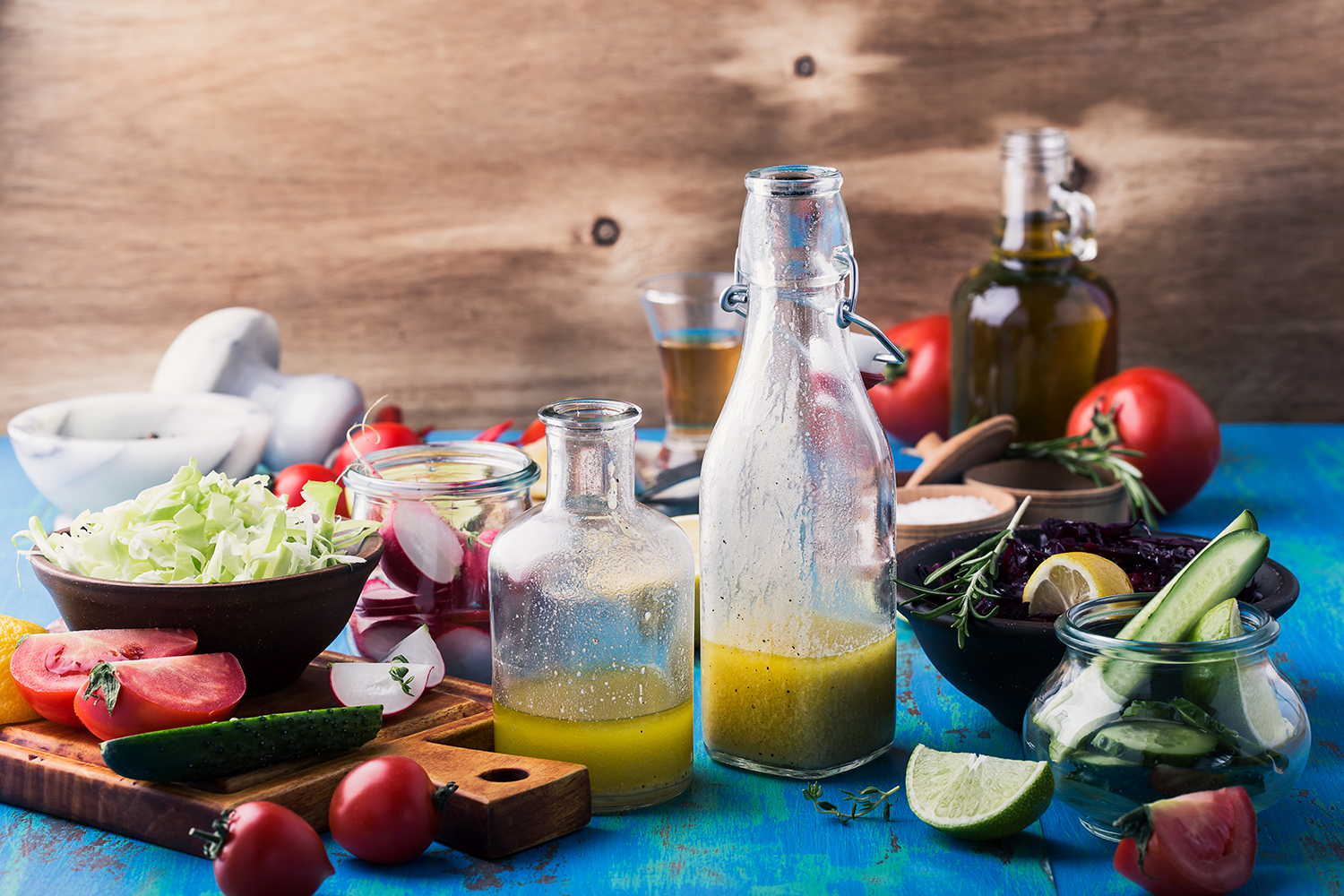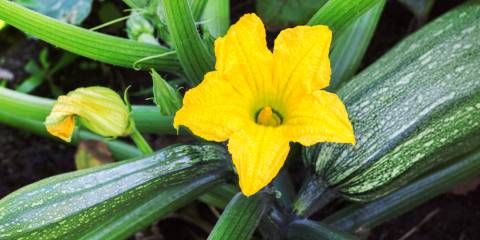Simple to make, a homemade dressing comes together about as quickly as it takes to get a bottled one from the cabinet and open it.
The simplest salad dressing to make is the oil-and-vinegar blend known as vinaigrette. When selecting the oil for homemade vinaigrette, choose extra virgin for the most flavor and health benefits. Olive oils labeled “pure,” “light,” and “extra light” have been refined and have less aroma and flavor than extra-virgin varieties.
For something special, consider nut oils such as walnut, macadamia, or hazelnut. Unique in flavor, they add an unparalleled nuttiness to salads of all types, but particularly those containing roasted vegetables such as squash, pumpkin, and sweet potato. Be sure to store nut oils in the fridge to prevent them from going rancid.
When making an Asian-inspired salad, try sesame oil. It’s made from roasted and crushed white sesame seeds. Remember, a little goes a long way with this highly flavored oil.
For a punch of flavor and some bright acidity, oil needs to be paired with vinegar when making a vinaigrette. Some varieties that work well include balsamic vinegar, apple cider vinegar, sherry vinegar, white or red wine vinegar, and rice vinegar.
Avoid overdressing a salad. This drowns out the flavors of the other ingredients. Pour on about half as much dressing as you think you need, and then toss the salad. Add more dressing if necessary.
Making Salad Dressing
Once you’ve selected an oil and vinegar combination:
- Whisk the oil and vinegar together in a 3-parts oil to 1-part vinegar ratio.
- Season with salt and pepper, and taste.
- Add more vinegar and/or oil to your liking.
Branching Out
-
Consider a Sweetener
To balance out the sweet and sour in a vinaigrette, you may need to add a small amount of sweetener. Natural sweeteners work best, and they add their own intriguing flavors. Maple syrup, honey, and agave syrup are good choices to help balance vinegar’s acidity. Use sweeteners sparingly in homemade dressings.
Remember, slices of fresh fruit and chopped dried fruit also contribute sweetness when added to a salad.
-
Try Using Mustard
A dollop of mustard whisked into a vinaigrette helps emulsify the dressing and adds a punch of flavor. Consider whole-grain, Dijon, American, and honey mustard varieties. Start with a teaspoon or two. Taste and add more as needed.
-
Add Herbs for Color and Flavor
Fresh herbs add bright pops of color to vinaigrettes. Try dill, tarragon, basil, flat-leaf parsley, mint, or cilantro.
Mince the fresh herb finely and whisk it in, or blend it into the vinaigrette using a high-speed blender or food processor for a creamier dressing.
For additional flavor, add grated lemon, lime, or orange zest. Minced garlic and shallots also make excellent additions to vinaigrettes.
-
Think Ahead: Make Extra
When making a vinaigrette, double the amount needed so there’s always extra ready in the fridge.
Storage
Keep leftovers in a glass jar stored in the refrigerator. For convenience, use a lidded screw-top jar so the vinaigrette can be shaken directly in the jar before adding to the salad.
If the vinaigrette’s oil solidifies upon refrigeration, simply let the dressing come to room temperature before use. Or, to speed things up, place the covered jar in some hot water to help melt the oil.





